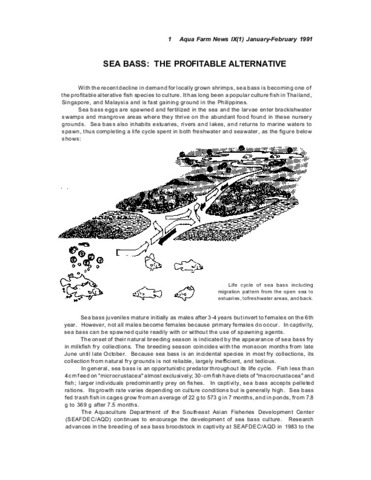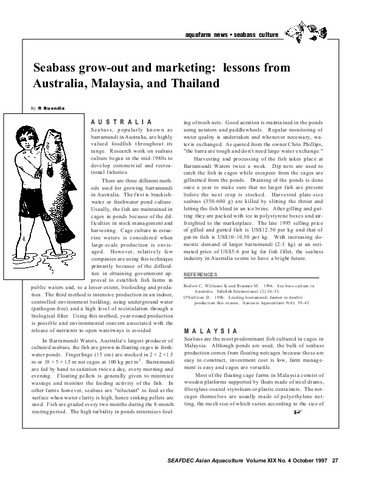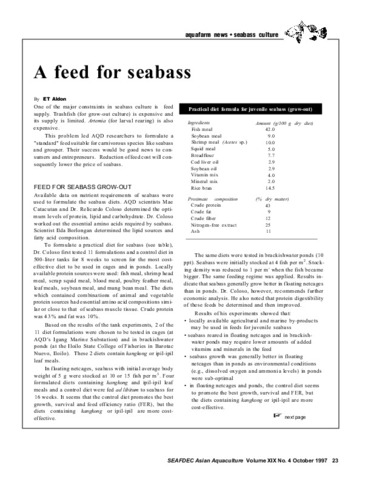Mass mortalities associated with viral nervous necrosis in hatchery-reared sea bass Lates calcarifer in the Philippines
- Global styles
- MLA
- Vancouver
- Elsevier - Harvard
- APA
- Help

URL ที่เชื่อมโยง
www.jircas.affrc.go.jpวันที่
2004Page views
1,468ASFA keyword
AGROVOC keyword
Taxonomic term
เมตาดาต้า
แสดงระเบียนรายการเต็ม
Share
นามธรรม
Viral nervous necrosis (VNN), also known as viral encephalopathy and retinopathy (VER), is an emerging disease affecting larvae and juveniles of many farmed marine fish species in Asia, Australia, Europe and North America. Mass mortality occurred in 14-day old larval sea bass Lates calcarifer at a hatchery in the Philippines associated with clinical signs such as abnormal swimming behavior and pale-gray discoloration of the body. Histological investigations in moribund fish revealed marked vacuolation in the retina and brain. Cytopathic effects (CPE) were observed in SSN-1 cells inoculated with the tissue filtrate of affected sea bass. A piscine nodavirus, the causative agent of VNN, was detected in the affected tissues and SSN-1 cells inoculated with the tissue filtrate of affected fish by RT-PCR. Electron microscopy revealed non-enveloped viral particles, 22-28 nm in diameter, in the cytoplasm of the brain and retina of affected fish and in the cytoplasm of VNN-infected SSN-1 cells after CPE appeared. These results indicate that mass mortality of sea bass larvae in the Philippines was caused by a piscine nodavirus.
การอ้างอิง
Maeno, Y., de la Peña, L. D., & Cruz-Lacierda, E. R. (2004). Mass mortalities associated with viral nervous necrosis in hatchery-reared sea bass Lates calcarifer in the Philippines. Japan Agricultural Research Quarterly , 38(1), 69-73. https://doi.org/10.6090/jarq.38.69
Type
ArticleISSN
0021-3551คอลเลกชัน
- Journal Articles [1258]
Related items
Showing items related by title, author, creator and subject.
-
Sea bass: The profitable alternative
Southeast Asian Fisheries Development Center, Aquaculture Department (Aquaculture Department, Southeast Asian Fisheries Development Center, 1991) -
Seabass grow-out and marketing: lessons from Australia, Malaysia, and Thailand
Buendia, Romeo (Aquaculture Department, Southeast Asian Fisheries Development Center, 1997) -
A feed for seabass
Aldon, E. T. (Aquaculture Department, Southeast Asian Fisheries Development Center, 1997)One of the major constraints in seabass (Lates calcarifer) culture is feed supply. Details are given of work conducted at AQD regarding the formulation of a 'standard' feed suitable for carnivorous species like the seabass ...





